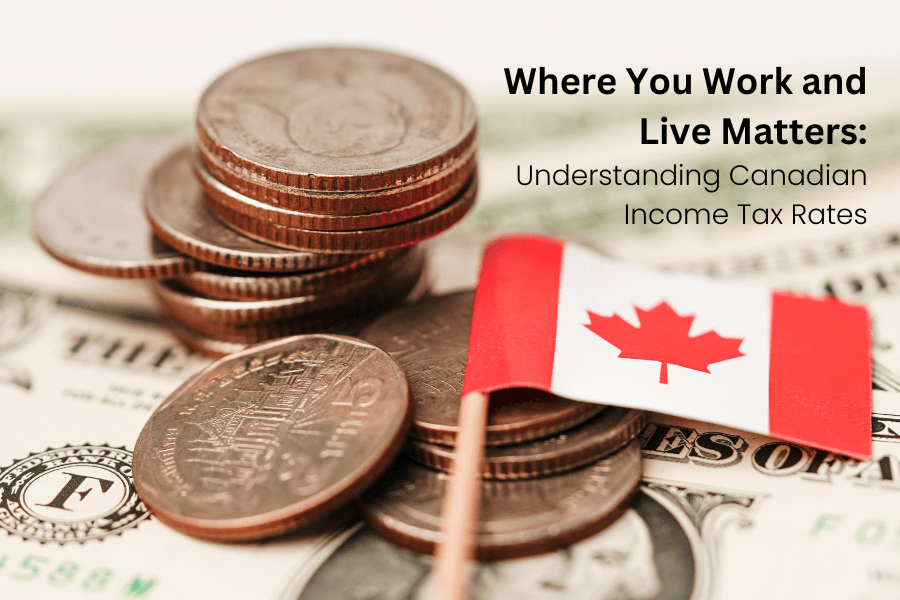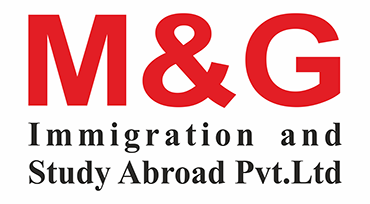Canada’s provincial tax system can be confusing when calculating your income tax, particularly for individuals working remotely for an employer in a different province or those in Canada on an IEC work permit or other temporary resident permit.
Income taxes in Canada form a critical component of the country’s fiscal landscape, supporting various government initiatives and public services. Managed by the Canada Revenue Agency (CRA), the Canadian income tax system encompasses federal and provincial levels, each with its own set of regulations and obligations. Understanding the intricacies of Canadian income taxes is essential for individuals, businesses, and organizations to navigate their financial responsibilities effectively. This introduction provides a glimpse into the complexities and key features of income taxation in Canada, offering insights into how it impacts taxpayers and shapes the broader economic landscape.
The Government of Canada sets the federal income tax rates for individuals.
Provincial or territorial income tax rates apply in addition to federal income tax rates.
Federal Income Tax Rates in 2024:
In 2024, federal income tax rates in Canada are structured as follows:
- 15% on taxable income up to $55,867
- 20.5% on taxable income from $55,867 to $111,733
- 26% on taxable income between $111,733 and $173,205
- 29% on taxable income from $173,205 to $246,752
- 33% on taxable income over $246,752
This means that individuals are taxed at 15% on their first $55,867 of taxable income. For income beyond $55,867, the applicable tax rate increases progressively as outlined above. It’s important to note that each tax rate applies only to the portion of income within its respective income bracket, not the entire income. For instance, the 20.5% tax rate applies only to income earned between $55,867 and $111,733, not the entire income.
Provisional Income Tax Rates in 2024:
Where you reside in Canada has a substantial impact on your cost of living, including the amount of income tax you incur. While we won’t delve into the specific income tax rates for each province and territory here, you can find them listed elsewhere. Instead, we’ll focus on examining the tax implications for an average newcomer in Canada residing in some of the more densely populated provinces.
For this discussion, let’s consider a hypothetical newcomer with a salary of $52,762. We’ll assume no additional sources of income, deductions, RRSP contributions, dividends, or capital gains or losses.
Each province and territory determines its income tax rates. Provincial and territorial tax rates vary across Canada; however, your provincial or territorial income tax (except Quebec) is calculated in the same way as your federal income tax.
Ontario income tax rates for 2024
| Tax rate | Taxable income threshold |
| 5.05% | on the portion of taxable income that is $51,446 or less, plus |
| 9.15% | on the portion of taxable income over $51,446 up to $102,894, plus |
| 11.16% | on the portion of taxable income over $102,894 up to $150,000, plus |
| 12.16% | on the portion of taxable income over $150,000 up to $220,000, plus |
| 13.16% | on the portion of taxable income over $220,000 |
British Columbia income tax rates for 2024
| Tax rate | Taxable income threshold |
| 5.06% | on the portion of taxable income that is $47,937 or less, plus |
| 7.7% | on the portion of taxable income over $47,937 up to $95,875, plus |
| 10.5% | on the portion of taxable income over $95,875 up to $110,076, plus |
| 12.29% | on the portion of taxable income over $110,076 up to $133,664, plus |
| 14.7% | on the portion of taxable income over $133,664 up to $181,232, plus |
| 16.8% | on the portion of taxable income over $181,232 up to $252,752, plus |
| 20.5% | on the portion of taxable income over $252,752 |
Alberta income tax rates for 2024
| Tax rate | Taxable income threshold |
| 10% | on the portion of taxable income that is $148,269 or less, plus |
| 12% | on the portion of taxable income over $148,269 up to $177,922, plus |
| 13% | on the portion of taxable income over $177,922 up to $237,230, plus |
| 14% | on the portion of taxable income over $237,230 up to $355,845, plus |
| 15% | on the portion of taxable income over $355,845 |
Prince Edward Island income tax rates for 2024
| Tax rate | Taxable income threshold |
| 9.65% | on the portion of taxable income that is $32,656 or less, plus |
| 13.63% | on the portion of taxable income over $32,656 up to $64,313, plus |
| 16.65% | on the portion of taxable income over $64,313 up to $105,000, plus |
| 18.00% | on the portion of taxable income over $105,000 up to $140,000, plus |
| 18.75% | on the portion of taxable income over $140,000 |
Nova Scotia income tax rates for 2024
| Tax rate | Taxable income threshold |
| 8.79% | on the portion of taxable income that is $29,590 or less, plus |
| 14.95% | on the portion of taxable income over $29,590 up to $59,180, plus |
| 16.67% | on the portion of taxable income over $59,180 up to $93,000, plus |
| 17.5% | on the portion of taxable income over $93,000 up to $150,000, plus |
| 21% | on the portion of taxable income over $150,000 |
Final Thoughts: Understanding these tax structures is crucial for individuals and businesses to navigate their financial obligations effectively. Moreover, factors such as residency, employment status, and types of income can further influence tax liabilities. Keeping abreast of tax regulations and seeking professional advice can help taxpayers optimize their financial planning and compliance efforts in the dynamic Canadian tax environment of 2024.























































































